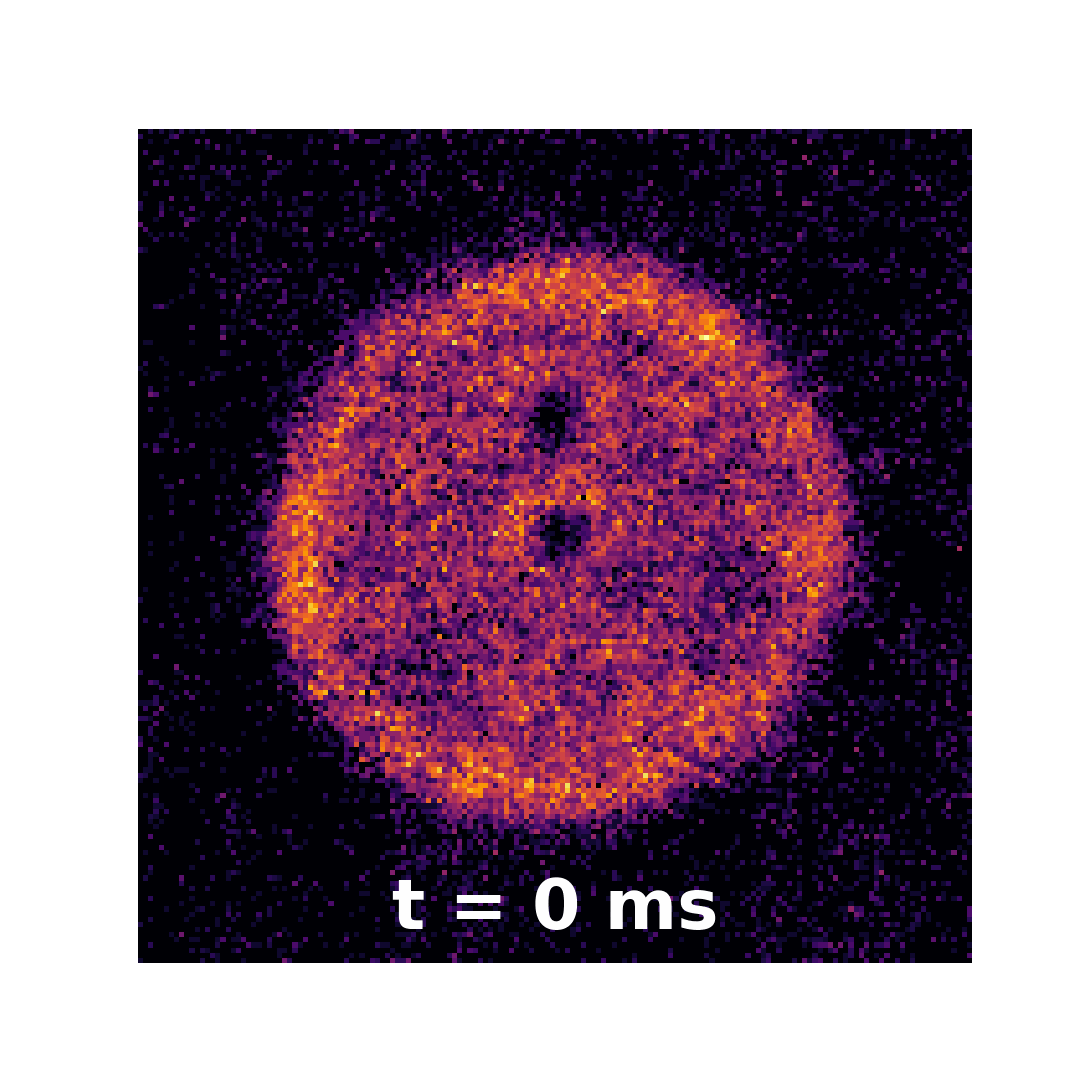 |
Mutual friction is a fundamental mechanism in finite-temperature superfluids, arising from vortex scattering with thermally excited quasiparticles and directly influencing vortex dynamics. Its microscopic origin is determined by the intrinsic properties of the system and the nature of its excitations. We investigate the two-dimensional motion of a single vortex orbiting a pinned anti-vortex in a unitary Fermi atomic superfluid at varying temperatures. From the observed trajectory, we extract the previously unknown longitudinal and transverse mutual-friction coefficients, which quantify the vortex-mediated coupling between the normal and superfluid components. Our results suggest that vortex dynamics in unitary Fermi superfluids is essentially affected by the interplay between delocalized thermal excitations and vortex-bound quasiparticles localized within the vortex core, the so-called Caroli–de Gennes–Matricon states. Further, from the mutual friction coefficients we determine the vortex Hall angle, which is linked to the relaxation time of the localized quasiparticles occupying Andreev bound states within the vortex core, and to the vortex Reynolds number associated with the transition from laminar to quantum turbulent flows. N. Grani, D. Hernández-Rajkov et al. For details on the data analysis see also: N. Grani, et al. |
LAST NEWS
 |
The Hall effect is a cornerstone of modern science, spanning applications from cutting-edge technologies to the discovery of exotic topological phases of matter. In solid-state systems, it manifests as a voltage perpendicular to current flow in a magnetic field, giving rise to transverse Hall resistance. Yet, its behavior in quantum systems remains elusive. Using neutral-atom quantum simulators, we introduce the first direct measurement of Hall voltage and resistance in a non-electron-based system. This work links quantum simulations to real-world experiments, unlocking new avenues to explore the Hall effect in tunable, strongly correlated systems. T.-W. Zhou et al. |
 |
A new PhD course is starting, and with it comes a wave of new students joining our team. An injection of fresh energy, curiosity, and ideas! Welcome to Michael Stiven Caracas Núñez (BaLi), Èlia Solé Cardona (Dy), Alessandro Vanni (Yb Tweezers), and Alberto Terenzi (Li). |
 |
Thanks to a fruitful collaboration with the electronic workshop of LENS, CNR-INO and INRiM, we have developed a new low-impedance and versatile RF antenna. The innovative design is tailored for cold atoms experiments, and we successfully tested its performance with ultracold lithium atoms. Our solution combines an optimized RF coil geometry with transmission-line impedance transformer, enabling large currents to flow through the coil while keeping electromagnetic interference with surrounding equipment negligible and maintaining wide optical access. Our versatile design may serve as a new standard for generating RF fields in cold atoms experiments. F. Scazza et al. |
 |
Alessio Ciamei has received an ERC Starting Grant for his project COMPASS: "An ultracold Molecule Platform for fundamental Asymmetry Searches". You can find the theoretical proposal behind COMPASS in his recent preprint written in collaboration with the group of Prof.M.Tomza (University of Warsaw): Congratulations! Positions are available at different levels. To learn more you can contact
|
